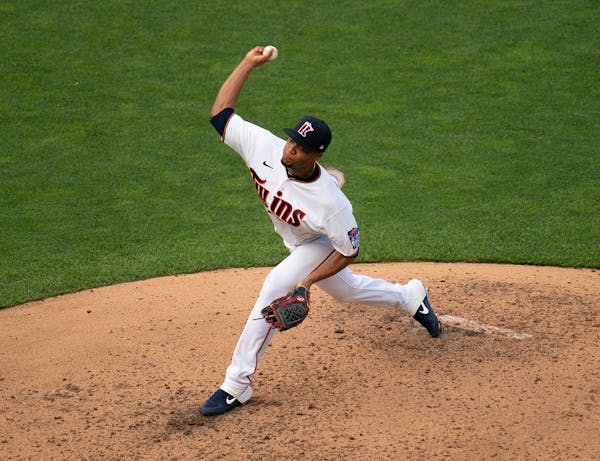Keoni Cavaco in 2019. Trevor Larnach in 2018. Royce Lewis in 2017. Alex Kirilloff in 2016.
Those are four first-round draft picks made by the Twins that probably would not be made this year. The club would not have had the time to build enough conviction to select those players.
Major League Baseball usually holds its amateur draft in early June. But that event, just like most on the baseball calendar, has been upended by the coronavirus pandemic. There will be a draft — but based on an agreement struck late last month between owners and players, it could happen anywhere between June 10 and July 20 and be as short as five rounds.
But the draft cycle already has been significantly affected. High school seasons never started and college seasons were canceled after a few weeks. No games. No eyes on players. No video. No analytics.
Cavaco's late surge during his senior year at Chula Vista High in Eastlake, Calif., prompted the Twins to select him 13th overall last June. If he were a senior this season, there would not be a lot of information to go on.
There's more information on college players to guide decisions, but Larnach's strong junior season at Oregon State — he jumped from three home runs in 2017 to 19 in 2018 — propelled him into the first round. Kirilloff played high school ball in Pennsylvania, so the Twins needed to watch him, weather permitting. Lewis, another California high school product, was a draft-day decision.
"You can go back to our 2016 draft, and they all could have been different if we did not have the entire spring," Twins scouting director Sean Johnson said. "With Kirilloff being a Pennsylvania high school kid, you don't have a ton of looks there.
"Cavaco, we were still building steam and evaluating him on a weekly basis. Did we have comfort taking him in March? I would say no is the answer."
In this unforeseen year, every major league team is in the same situation — a draft for which they could not have anticipated.
"Sean and his staff do an exceptional job to prepare for the draft season starting about a week after the previous draft wraps up and all the way through the spring," Twins President of Baseball Operations Derek Falvey said. "While everyone will be without a season of looks here, I'm confident that the work our guys have put in already will help us to get prepared for this draft."
The Twins hope the draft takes place closer to June 10 than July. MLB is determining the date, and the length. The length of the draft could come down to how much owners want to spend on draft picks in a year in which revenue has been decimated by the health emergency.
Shorter process
Draft bonus pools will remain the same as last year for this draft in 2021. The Twins hold the 27th overall pick in the first round, with a recommended slot value of about $2.6 million.
"We are preparing for 10 or more rounds," Johnson said. "It could be five, but there are so many variables there we're not going to anchor ourselves to five. We want to be prepared for 10 or more. We'll stack our boards the best we can. Every team is going to have some blind spots, players they just haven't seen enough of yet."
According to Alex Hassan, the Twins director of player development, there are enough players in the organization to field rookie league teams in the Appalachian League and Gulf Coast League in the event the draft is as short as five rounds. The team likely would sign some undrafted free agents, too.
Aside from the late bloomers or prospects who have short seasons because of weather, teams have info going back to previous summers on players. But there's more uncertainty with prep prospects, and that group could be more greatly affected by the situation baseball is in.
Older players benefit
Johnson agreed that draft boards could skew toward college players this year because of that — plus the player pool looks to have better depth in the college ranks this particular year anyway.
"Now there will be a good chunk of guys who had limited visibility or had some question marks coming into the spring that you didn't have chance to check every box on," Johnson said. "You'll see that group slide to college if they have strong commitments there or attend junior college for a year.
"I think the junior college talent will be up next year. There's just not enough room for every player."
Johnson held a conference call Monday with about 20 of his scouts that was set to last about 90 minutes but ran longer than two hours — and that was just to break down prospects in the west region.
"We know we've got time," Johnson said. "We're trying to find ways to be creative and be opportunistic with the landscape that we have. It feels like everyone has the same viewing time on these players. We are all in the same boat."






